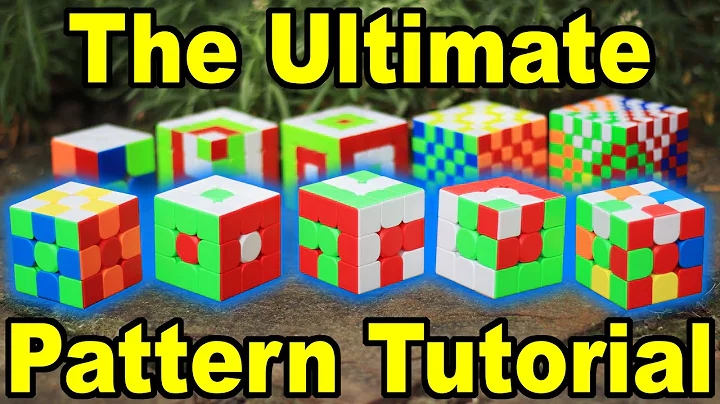Creating patterns on a Rubik’s Cube can be a fun way to showcase your cubing skills and impress others. Below, I’ll provide a tutorial on how to create five popular Rubik’s Cube patterns that you can try on a standard 3×3 Rubik’s Cube:
Pattern 1: Checkerboard Pattern
- Scramble the Cube: Start with a scrambled Rubik’s Cube to create a blank canvas for the pattern.
- Edge Swap: Use the following sequence of moves to swap pairs of edge pieces:
- R2 U2 F2 B2 L2 D2
- Adjust Colors: Rotate the cube to align the swapped edges, creating a checkerboard pattern on each face.
Pattern 2: Cube in a Cube Pattern
- Scramble the Cube: Begin with a scrambled cube for a clean slate.
- Edge and Center Alignment: Align the center pieces and edge pieces to form a smaller cube pattern on each face, creating the illusion of a cube inside a cube.
Pattern 3: Flower Pattern
- Scramble the Cube: Start with a scrambled cube.
- Edge and Corner Positioning: Position edge and corner pieces to resemble petals radiating from the center of each face, forming a flower-like pattern.
Pattern 4: X-Cross Pattern
- Scramble the Cube: Begin with a scrambled cube.
- Edge Orientation: Align edge pieces to form an X shape on each face, ensuring edges are oriented correctly to maintain the pattern.
Pattern 5: Spiral Pattern
- Scramble the Cube: Start with a scrambled cube.
- Layer Rotation: Gradually rotate layers in a sequence to create a visually appealing spiral pattern across multiple faces of the cube.
Tips for Creating Patterns:
- Practice with Intent: Experiment with different move sequences and rotations to achieve desired patterns.
- Use Algorithms: Some patterns may require specific algorithms or sequences of moves. Learn these for more complex designs.
- Visualize the Outcome: Before executing moves, visualize how the pattern will look and plan your approach accordingly.
- Have Fun and Be Creative: Creating patterns is a creative process. Enjoy exploring different designs and techniques on your Rubik’s Cube.
Remember, these patterns can be adapted and extended to larger cubes like the 4×4 or 5×5 with additional considerations for the increased complexity. Challenge yourself to explore new patterns and share your creations with fellow cubers to inspire others in the community!
